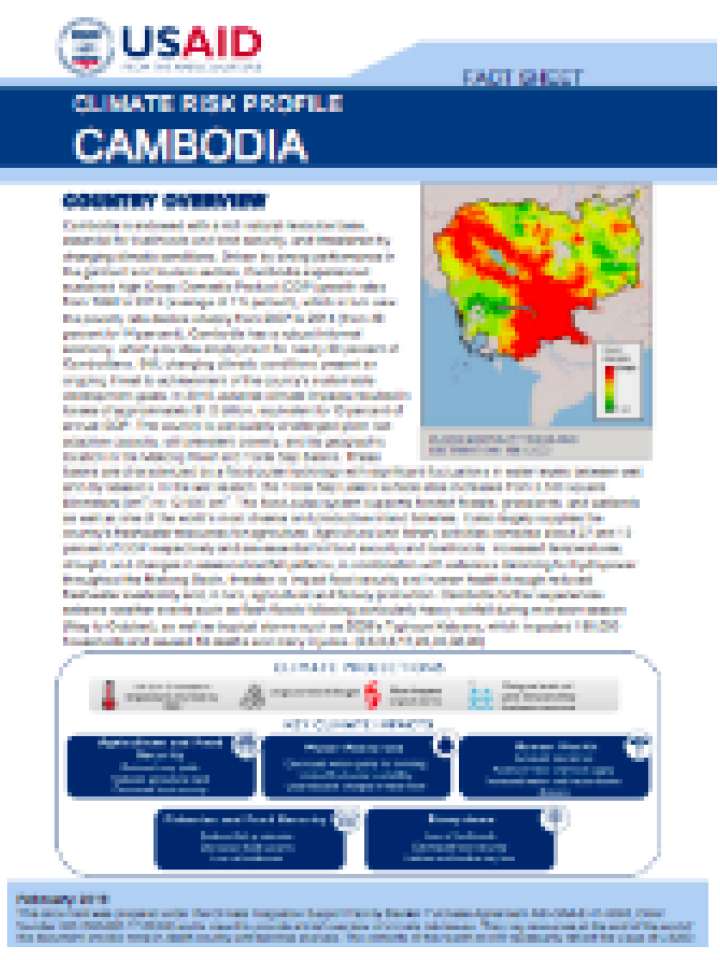Climate risk profile: Cambodia
This profile provides an overview of climate risk issues in Cambodia, including how climate change will potentially impact five key sectors in the country: agriculture and food security, water resources, ecosystems, human health, and fisheries and food security. The brief also includes an overview of historical and future climate trends in Cambodia, the policy context outlining existing climate risk strategies and plans developed by Cambodia, and a list of ongoing projects that focus on climate adaptation.
Cambodia is endowed with a rich natural resource base, essential for livelihoods and food security, and threatened by changing climatic conditions. Driven by strong performance in the garment and tourism sectors, Cambodia experienced sustained high Gross Domestic Product (GDP) growth rates from 1994 to 2015 (average of 7.5 percent), which in turn saw the poverty rate decline sharply from 2007 to 2014 (from 48 percent to 14 percent).
Cambodia has a robust informal economy, which provides employment for nearly 60 percent of Cambodians. Still, changing climatic conditions present an ongoing threat to achievement of the county’s sustainable development goals. In 2015, adverse climate impacts resulted in losses of approximately $1.5 billion, equivalent to 10 percent of annual GDP. The country is particularly challenged given low adaptive capacity, still prevalent poverty, and its geographic location in the Mekong River and Tonle Sap Basins.
Explore further
